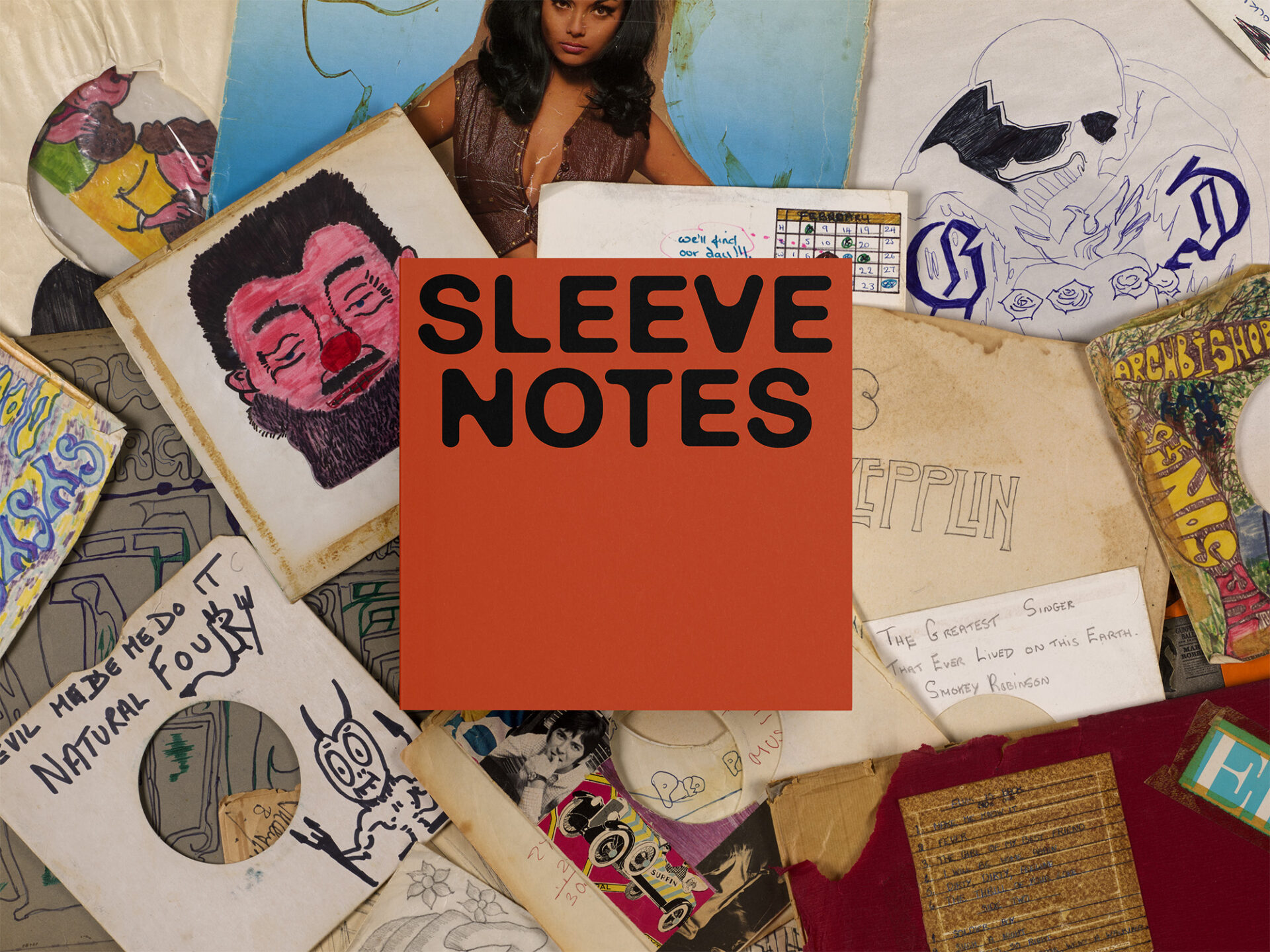For the last few years, I’ve been photographing a sizable collection of fan-made record sleeves that have washed up at the second-hand record store Crazy Beat in Upminster, Essex. My dad works in the shop, and this venture began when he brought me two handmade 45 sleeves – one for Sex Pistols, another for T.Rex – that at some point in the 1970s had been decorated with newspaper clippings stuck to the inner sleeves with crispy, yellowing Sellotape. Both are rough and ready, as are most of the fan-made sleeves in the collection. But the things they seem to say about music fandom are often nuanced and profound.
Since that first pair, my dad has supplied me with more and more of these sleeves, all of which have been handmade by different individuals for myriad reasons and across several decades. Three years later, the collection stands at over 200. Though the aesthetic tends to be reliably scrappy, they have often been used to express teenage fandom or infatuation. Most display extensive creativity, using original design in felt tip, paint, pencil, biro and typewritten text. Some are elaborate, painstaking acts of devotion, multi-coloured frescos that sprawl out across the full expanse of the inner sleeve. Others are tossed-off fragments of past lives lost to the ebb and flow of time: phone numbers, shopping lists, grovelling love letters.
What makes the sleeves even more poignant is that often, the records make their way to Crazy Beat because the owners have passed away, or are at a point in their lives where they can no longer afford to hang on to their music collections.
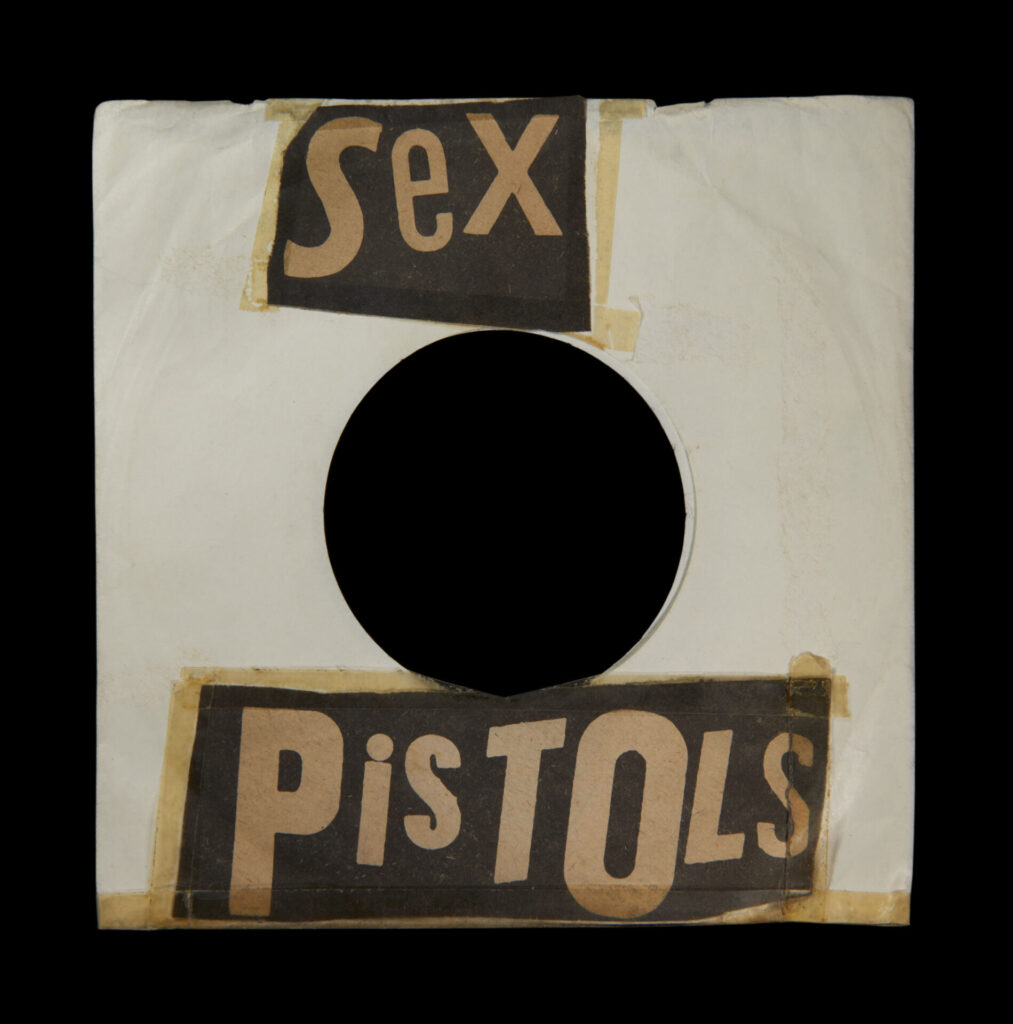
Sometimes, it’s the owner sketching out the outfit to be worn at the next youth club function; in others, they’re writing down a takeaway order. A favourite of mine reads, in all capitals: ‘WAKE ME UP AT 10 O’CLOCK PLEASE’; maybe they rested the centre hole on their nose whilst they slept. Another, blank all over apart from some small text in the top left-hand corner, simply says ‘bollocks’.
My background is in heritage photography, and I had a natural urge to collect, catalogue and photograph the sleeves, keeping the same high standards as I do for museums, libraries and archives. I see great importance in collecting and preserving them; as a collection they recall a pre-internet era of devotion, a time when music ownership was sealed with a fan’s own handiwork.
The book’s publishers CentreCentre have found a forte in creating books from unexpected collections, making the invisible seen and the forgotten found. And that’s how Sleeve Notes came about, a book celebrating the passion and creativity of music lovers through 150 fan-made inner record sleeves.
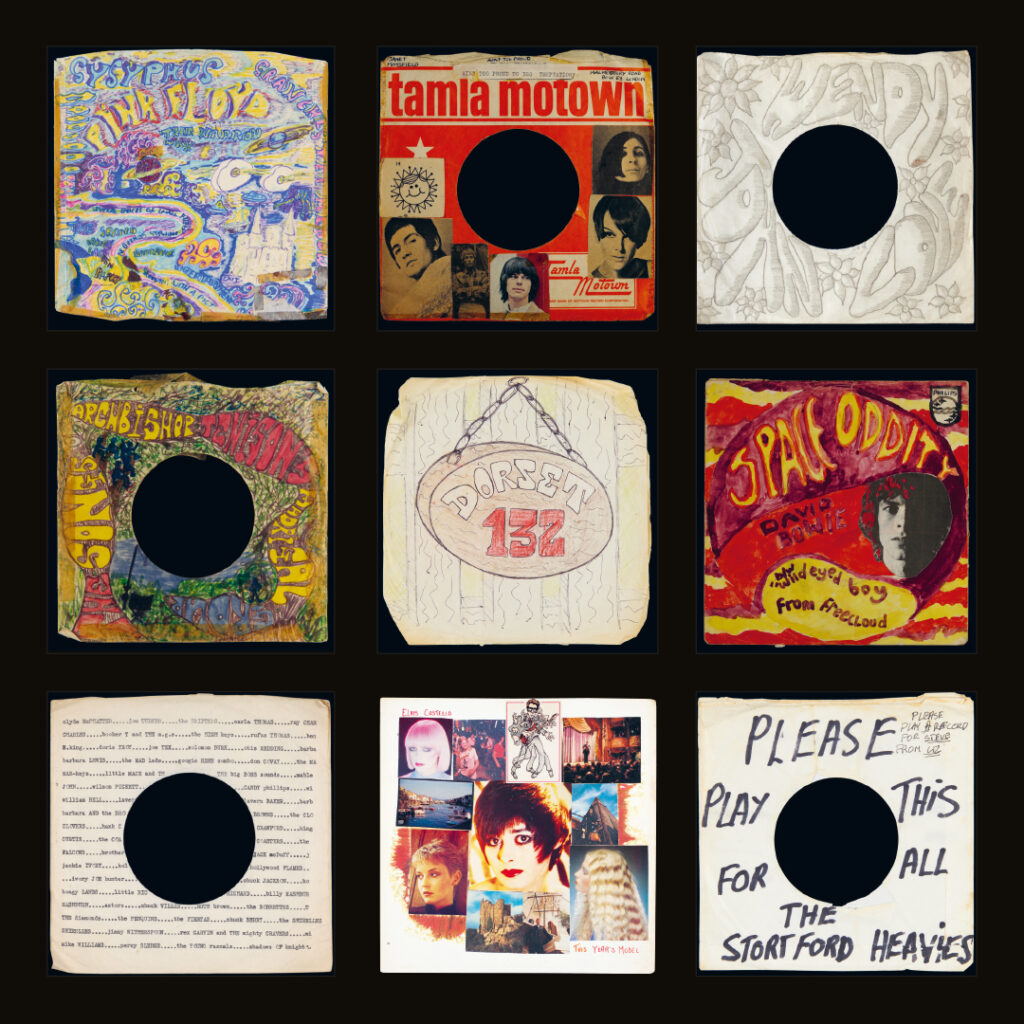
People come into Crazy Beat every day to sell records, giving great insight into all kinds of personally curated music collections. The walls of Crazy Beat are a vibrant collage of memorabilia, stickers, drawings, clippings, lists, and other curiosities you’d expect to find tucked inside old record sleeves. And like me, the staff see the importance in collecting and displaying this material too.
At Crazy Beat, they sometimes find objects not normally associated with records hidden in the sleeves. These include letters of love – many never delivered to that special someone, or stashed away from the prying eyes of another special someone. They find paper money, often now not legal tender having been ferreted away so long ago, set aside for a special purchase but subsequently forgotten; concert tickets buried within sleeves to serve as a memory-jog of a special evening; and, often, drugs.
The most common occasion for second-hand records to arrive in the shop is, unfortunately, a death, accounting for roughly 80 percent of their acquisitions. A smaller proportion are procured from house moves, and the remainder through someone’s need of cash to fund other projects – like utility bills, or children. Thus, the circle of life – and the old records – continue to spin.
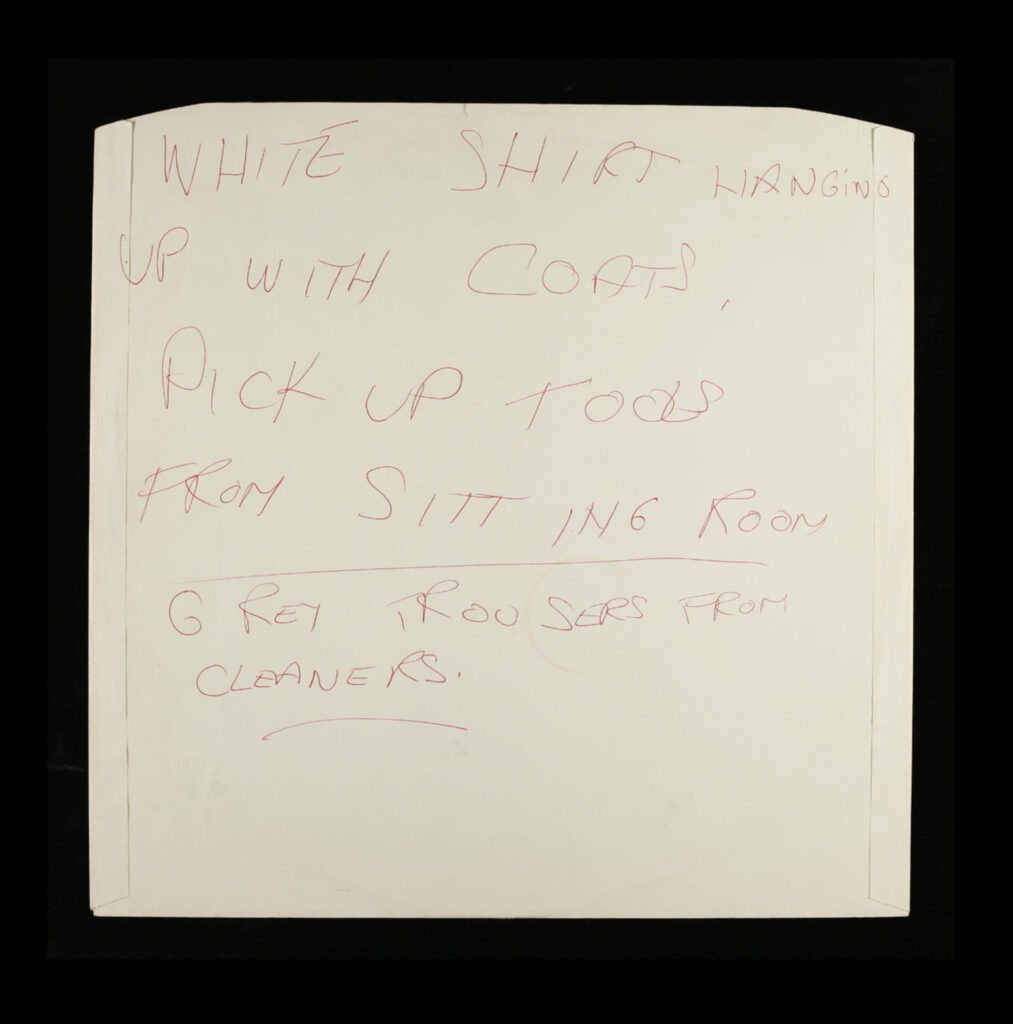
On my way out of the shop during my last visit, I spotted a 45 stuck in the ceiling, ‘I’d Be A Fool Right Now’ by Stevie Wonder. Apparently it was chucked up there years ago, got stuck, and has been there ever since. Another of my favourite spots was a shifty portrait of Eric Clapton.
Many of these distinctive sleeves exist because the originals were lost, stolen or damaged. The more blank sleeves there are in a collection, the longer it takes to find the right LP. You might be wondering how records become detached from their sleeves in the first place, my dad told me this anecdote:
“Browsing the local record shop, you unearth something on your ‘want’ list and immediately rush to the counter in a flurry of overexcitement. Handing the sleeve over to one of the surly staff members, they disappear to the back to reunite it with the actual record that is being stored in the shop’s high-tech filing system.
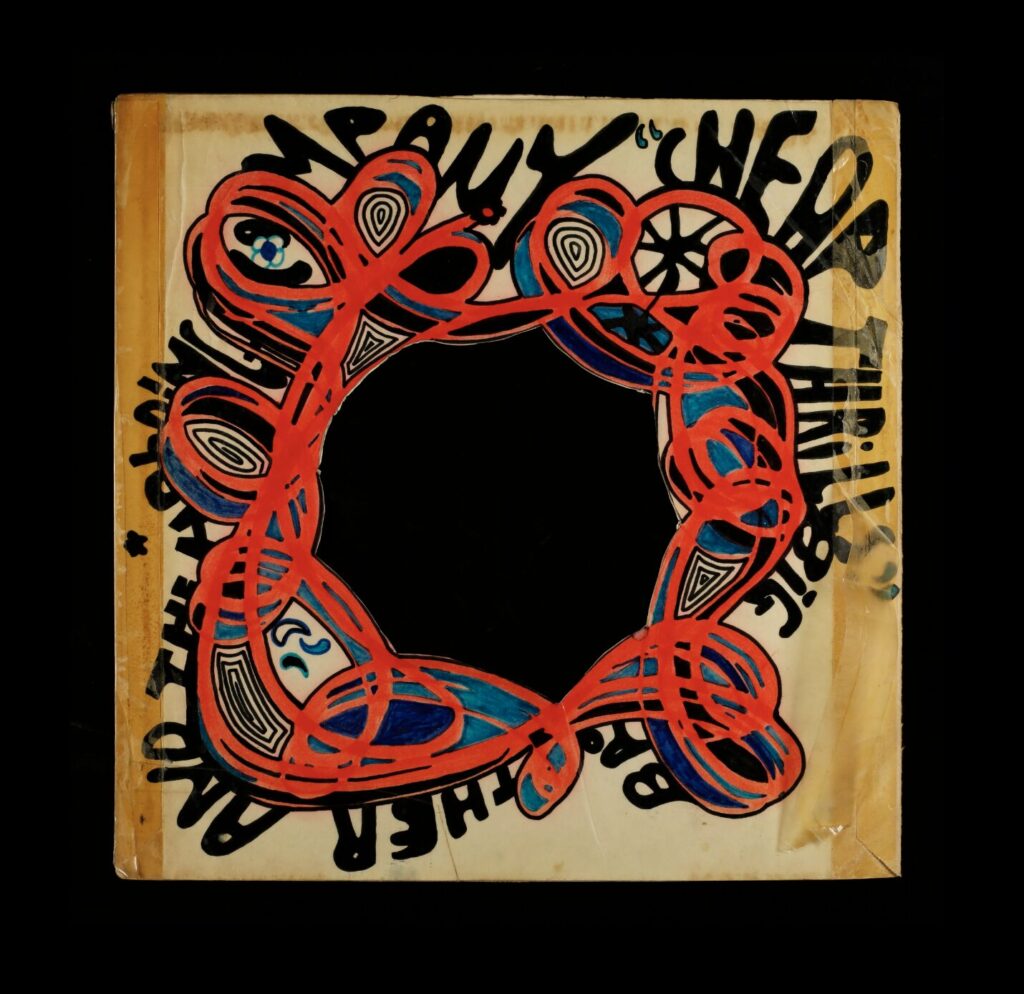
After a considerable amount of time, the assistant returns with an all-too-familiar look on their face. ‘Sorry, the LP can’t be found’. There’s nothing left to do but slope out of the shop in abject disappointment.
In the months ahead, the record shop will carry out a stock check. It will find that it has many more records than sleeves – because of both misfiling and customer theft throughout the year.
Yet all is not lost. Fast forward to the January sales, when the sleeveless records need to be sold to make way for new stock – usually at very low cost, and a loss to the shop. It’s not unusual to see a full rack of ‘naked’ LPs in plain sleeves, all divorced from their original partners, during this time.
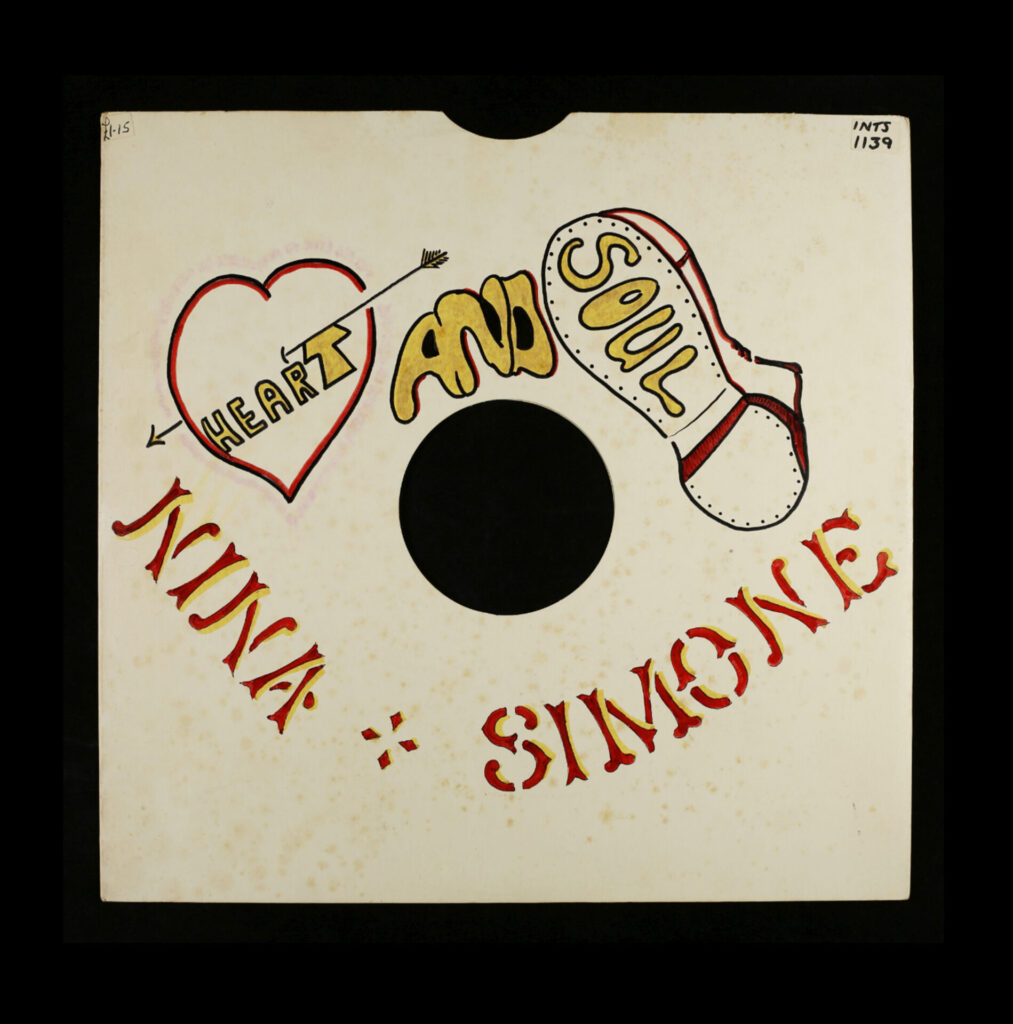
For the young, the desperate and the tight, purchasing an album without its sleeve represented a budget-friendly method of obtaining the sounds held within. Until the turn of the century, owning the physical object was the only way to hear a complete record – and the greater quantity of records someone owned, the more kudos they earned within their community of music lovers.”
People’s record collections are a fascinating insight into the rich journey they’ve taken, through music and life more generally. They can display a wealth of in-depth knowledge, often in one particular area but sometimes in multiple genres that might appear very distant from one another – obviously, every collector walks their own path of discovery. Records are often handed down by parents or gifted by romantic partners now lost in the mists of time, adding to a collection’s emotional depth.
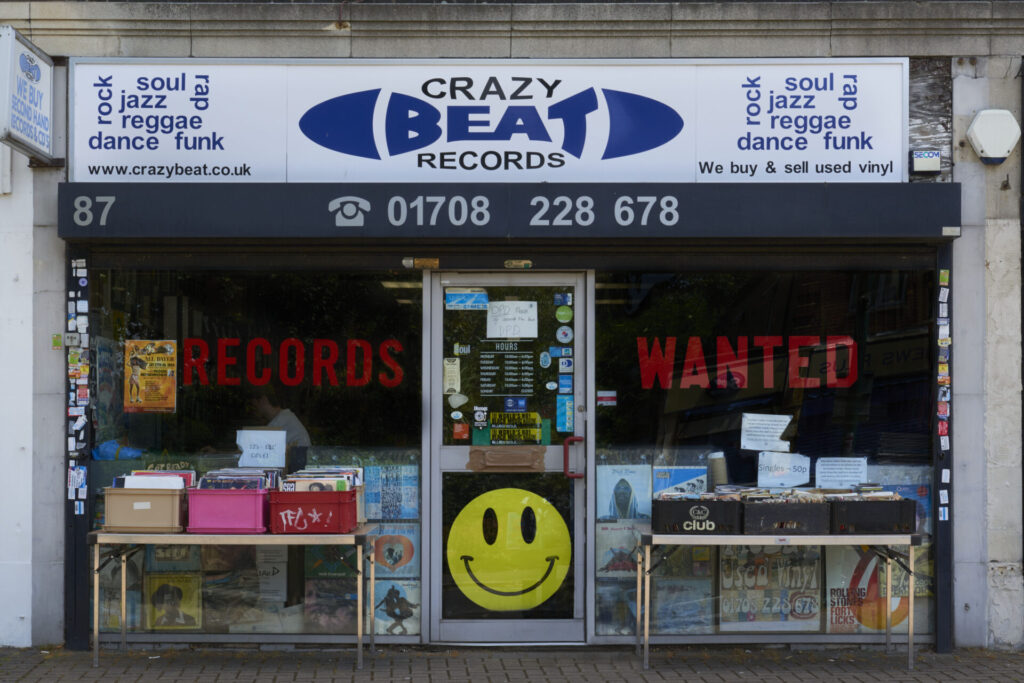
Many of these records would’ve been bought in youth, when LPs were displayed beneath the owner’s arm as they walked about town, confirming an allegiance to a particular genre or tribe. Before social media, this was a way for an individual to publicly broadcast a message about how cool they were – or at least, how cool they thought themselves to be.
Of course, one day, the collections these naked records join may well return to the vinyl ecosystem, donated back to shops like Crazy Beat after years of attentive adoration.
Sleeve Notes by Dominique Russell is published by CentreCentre

